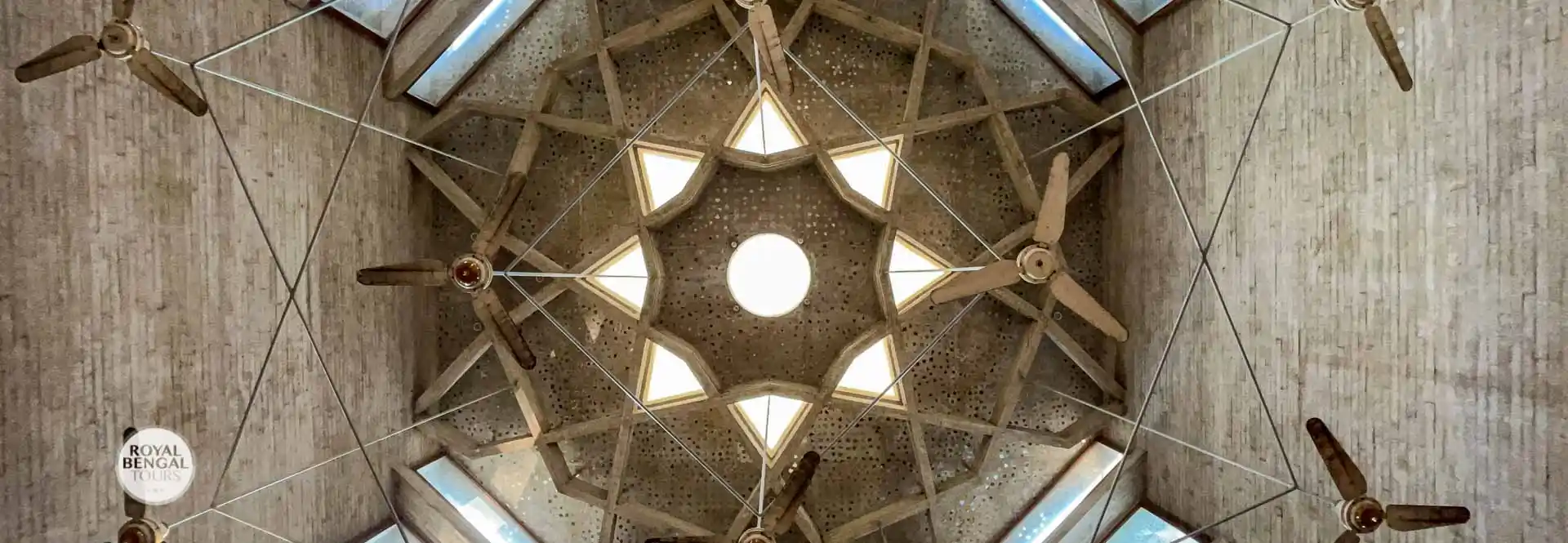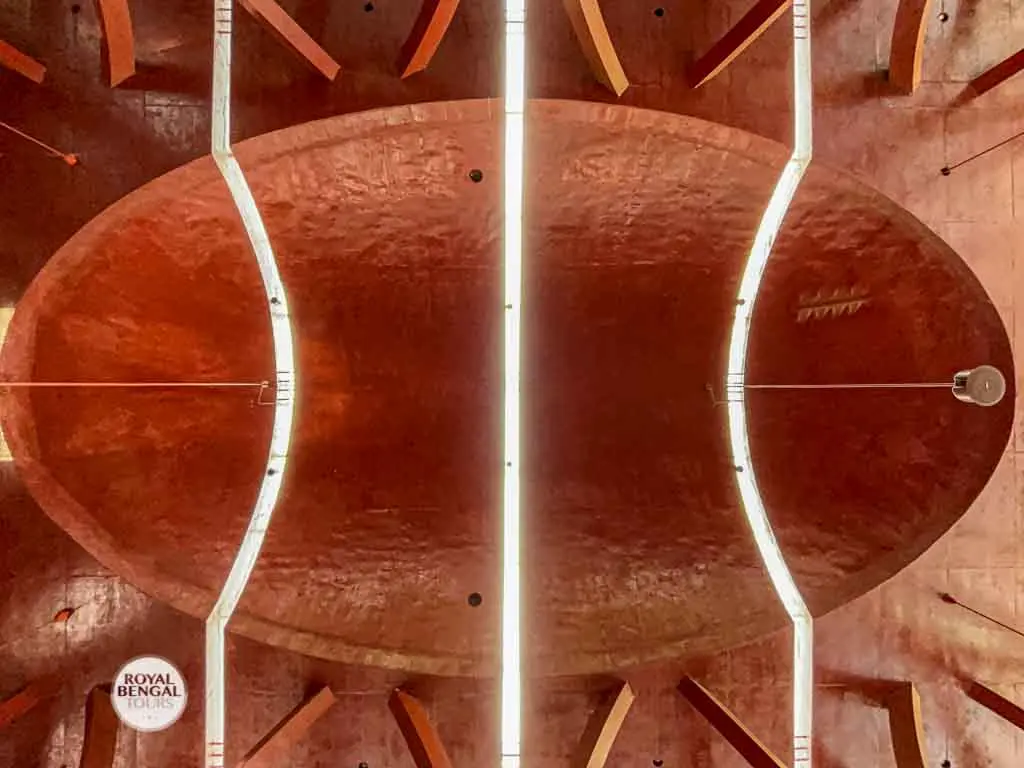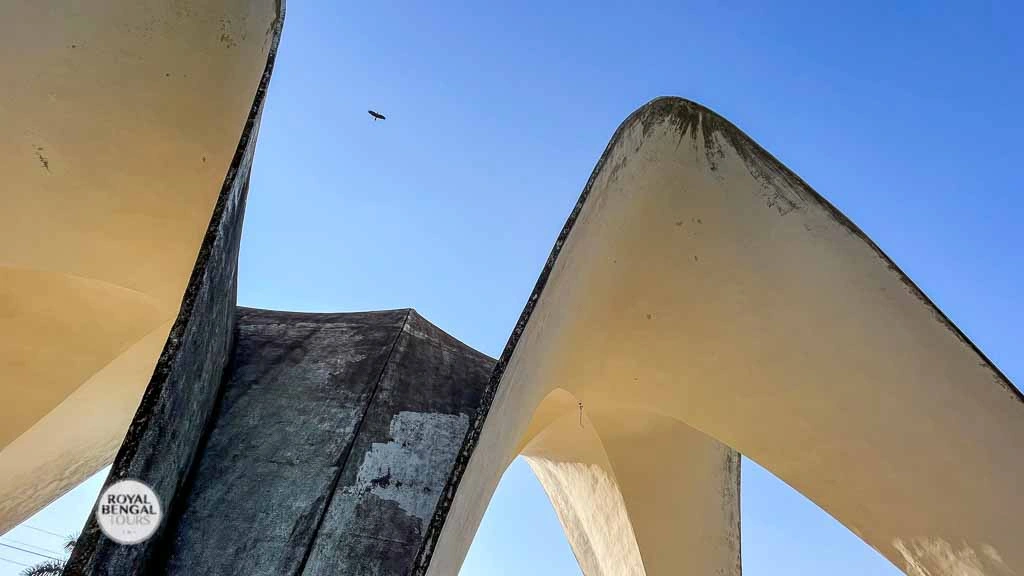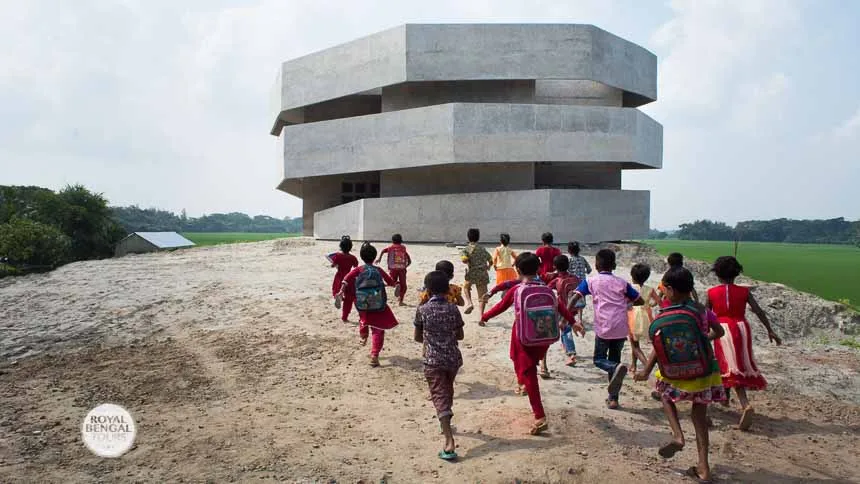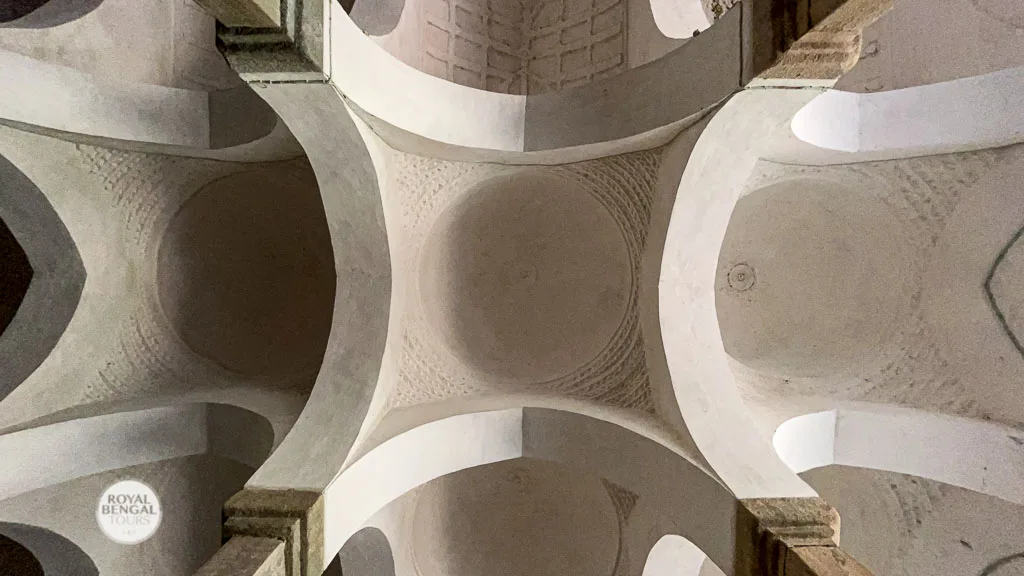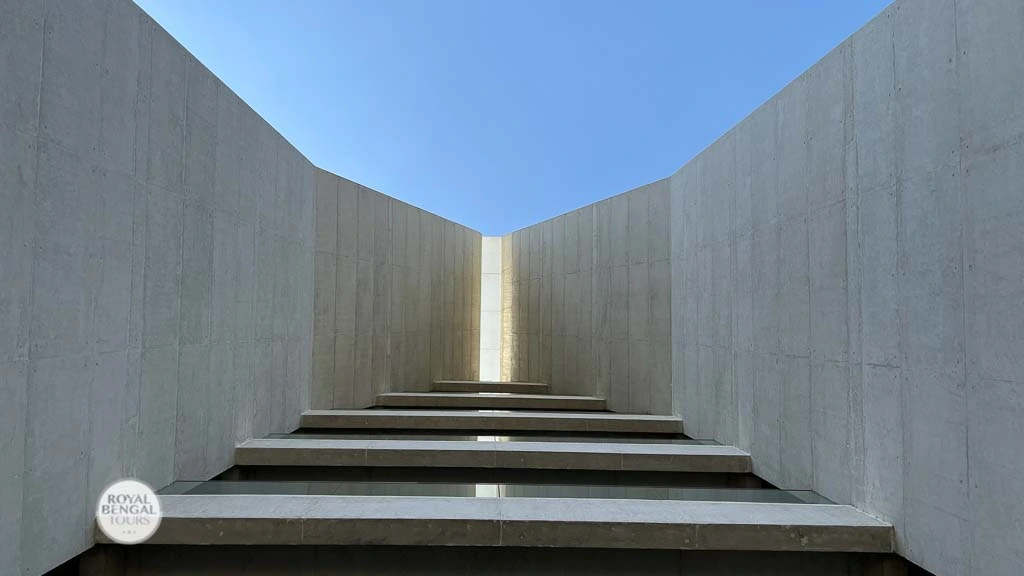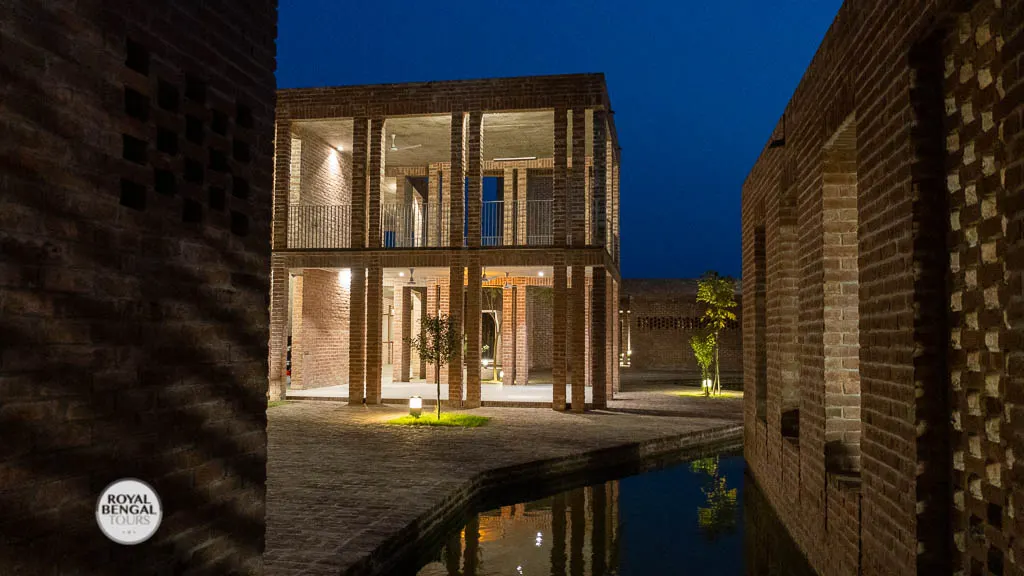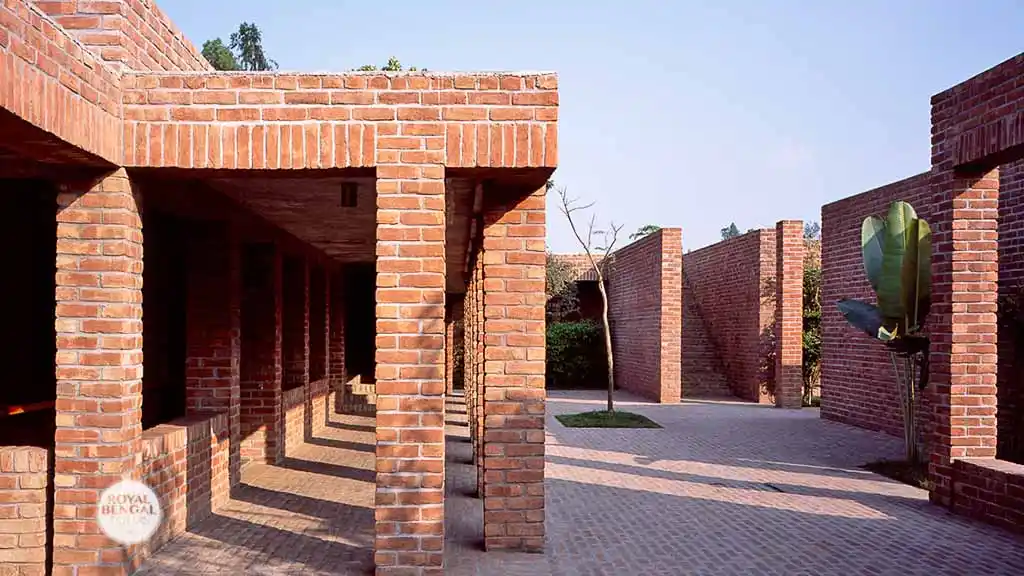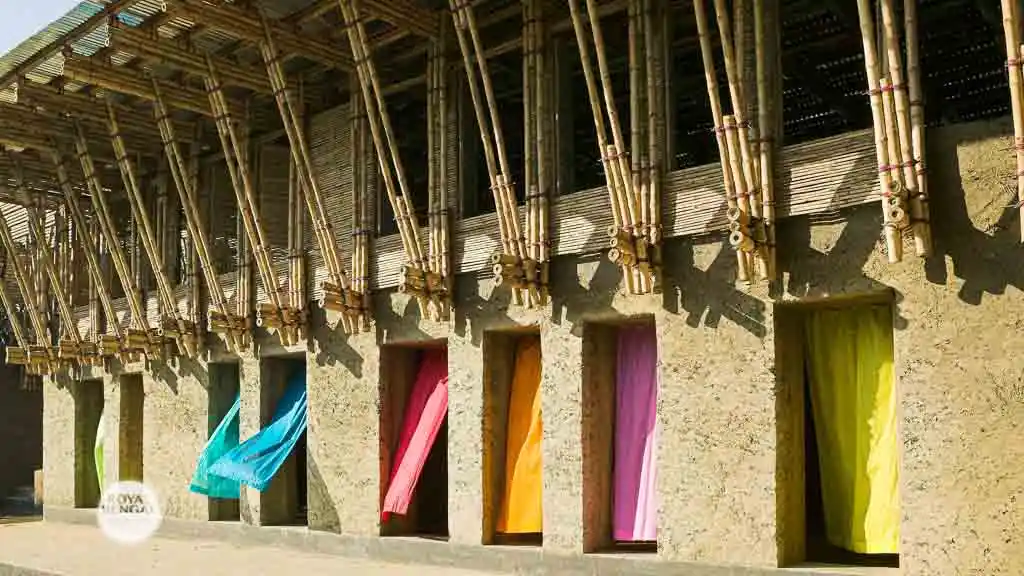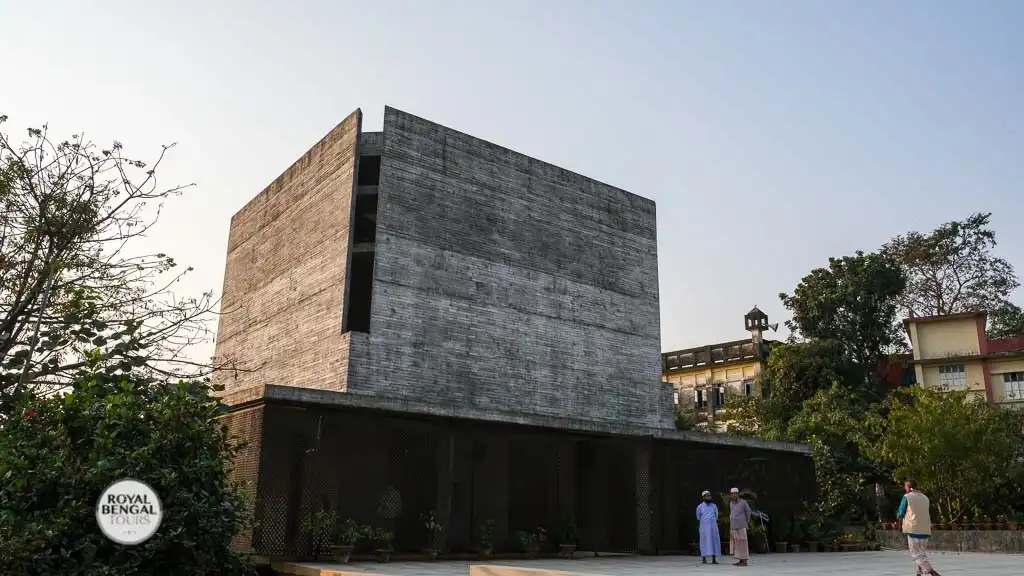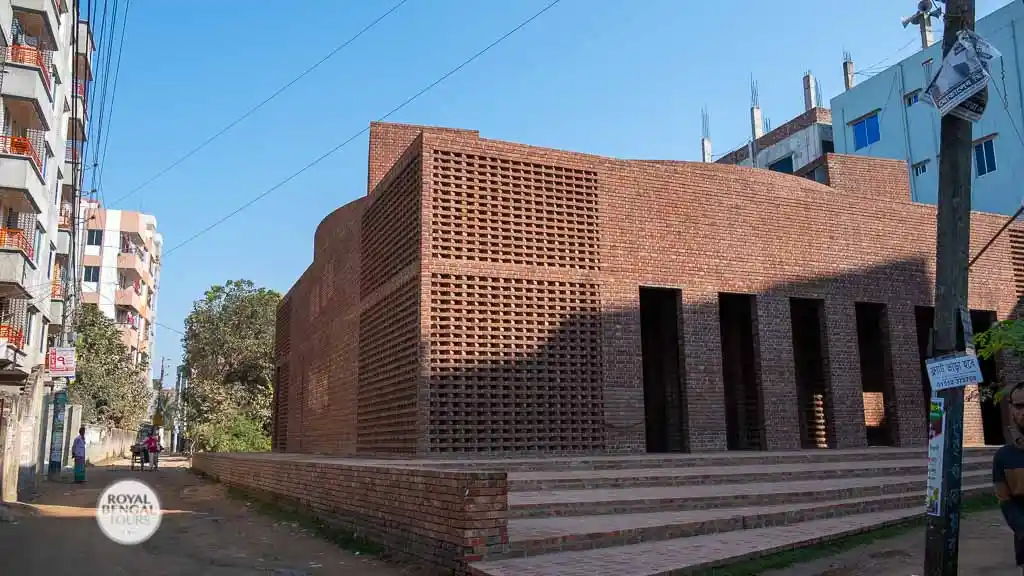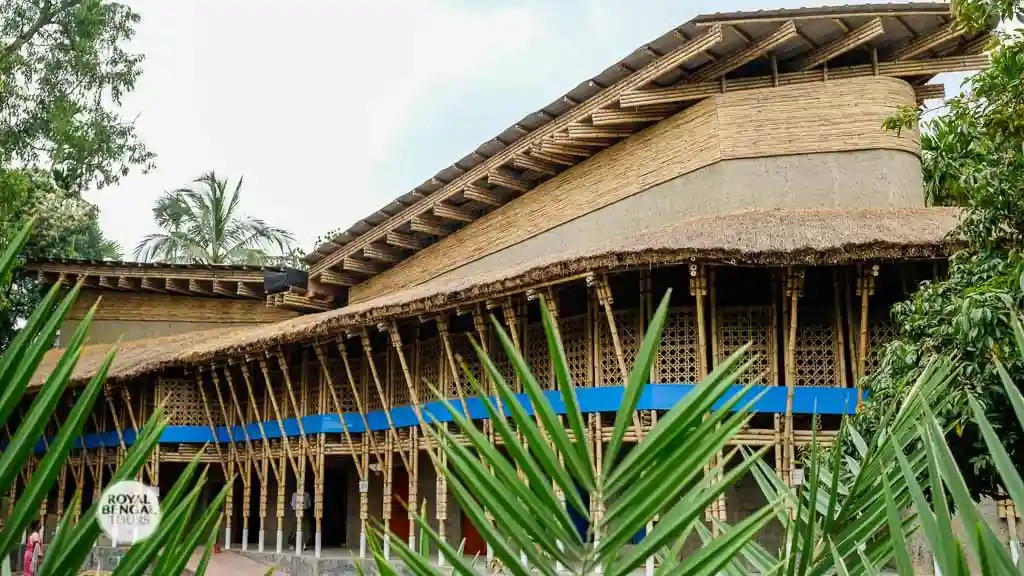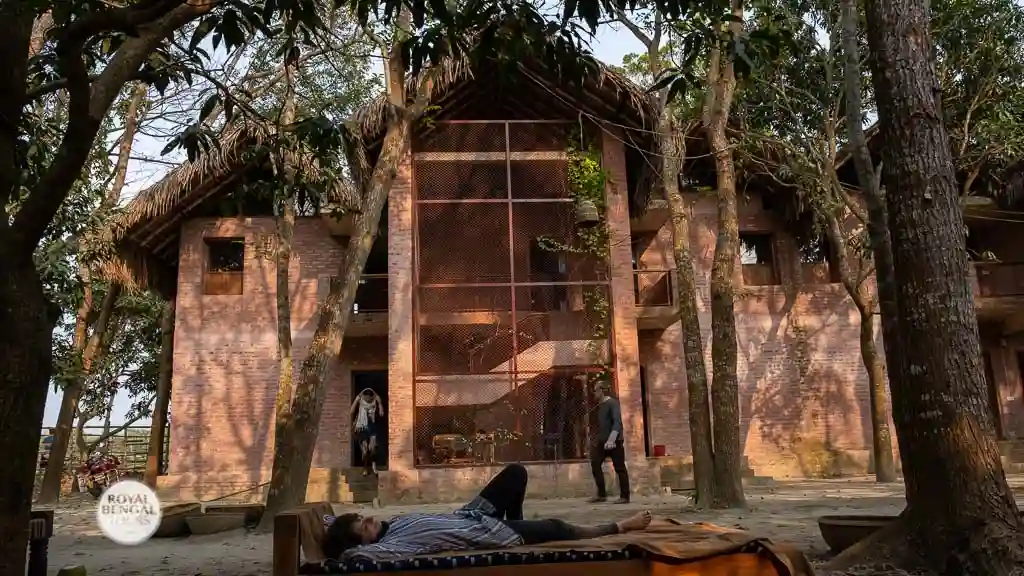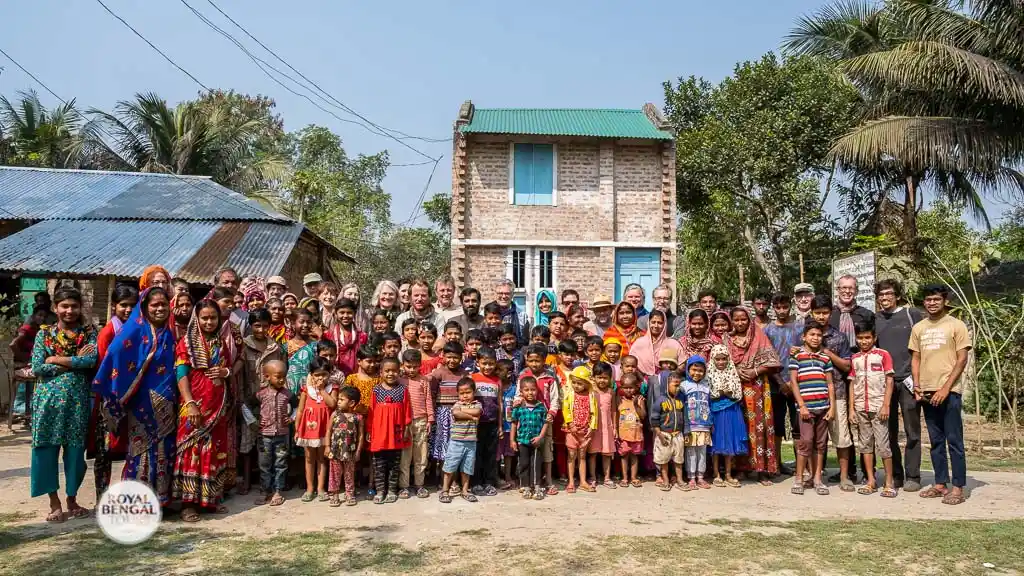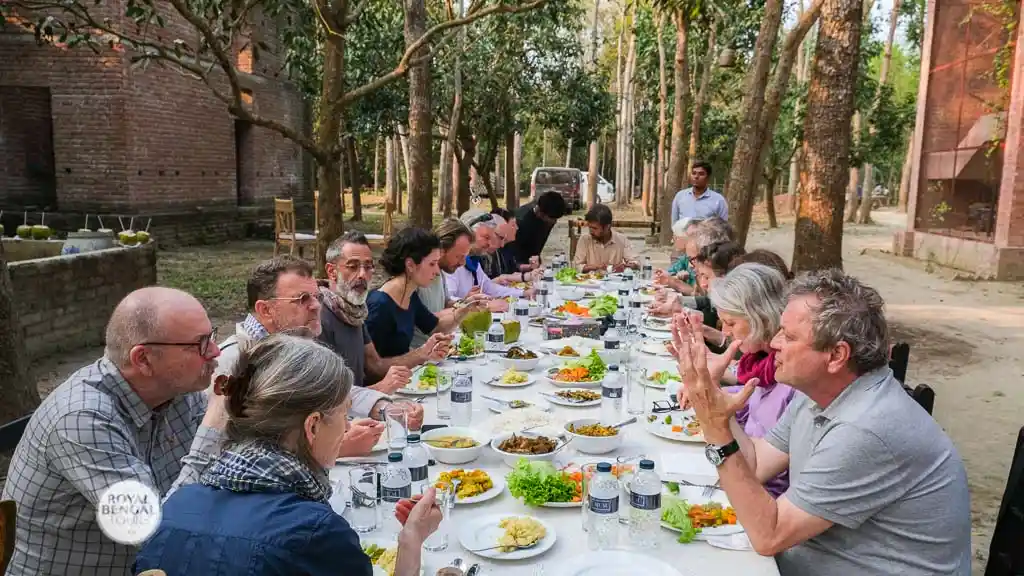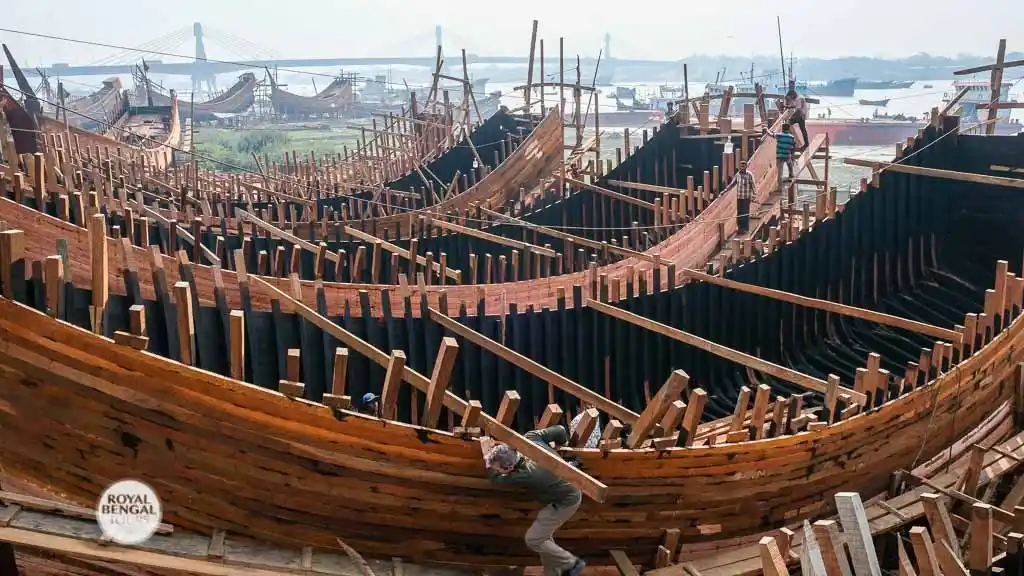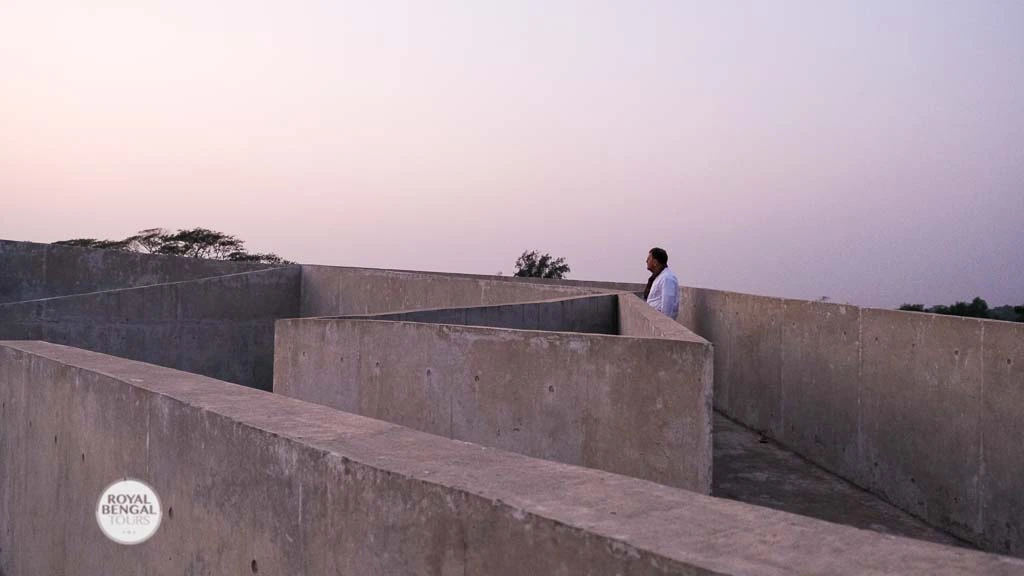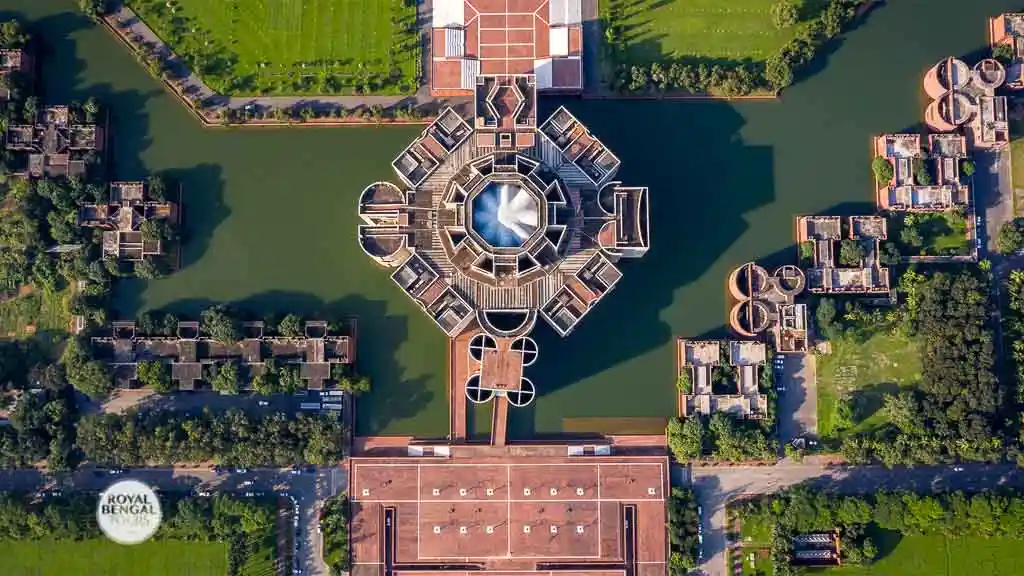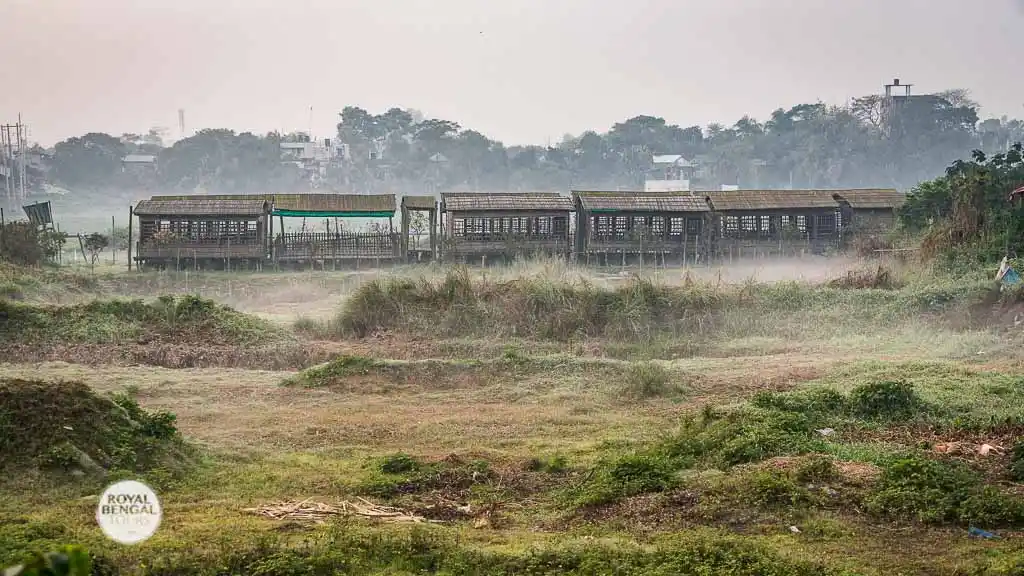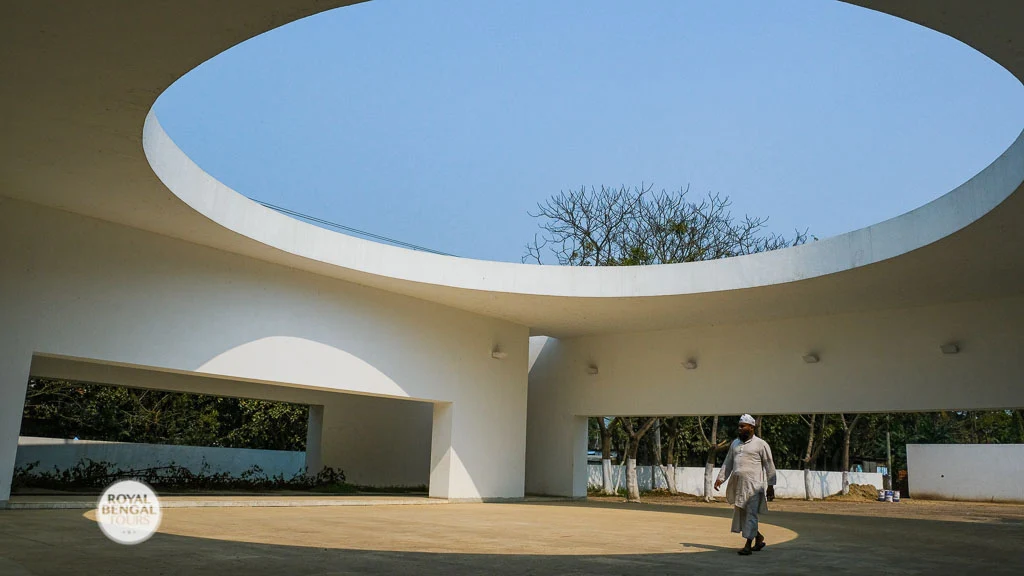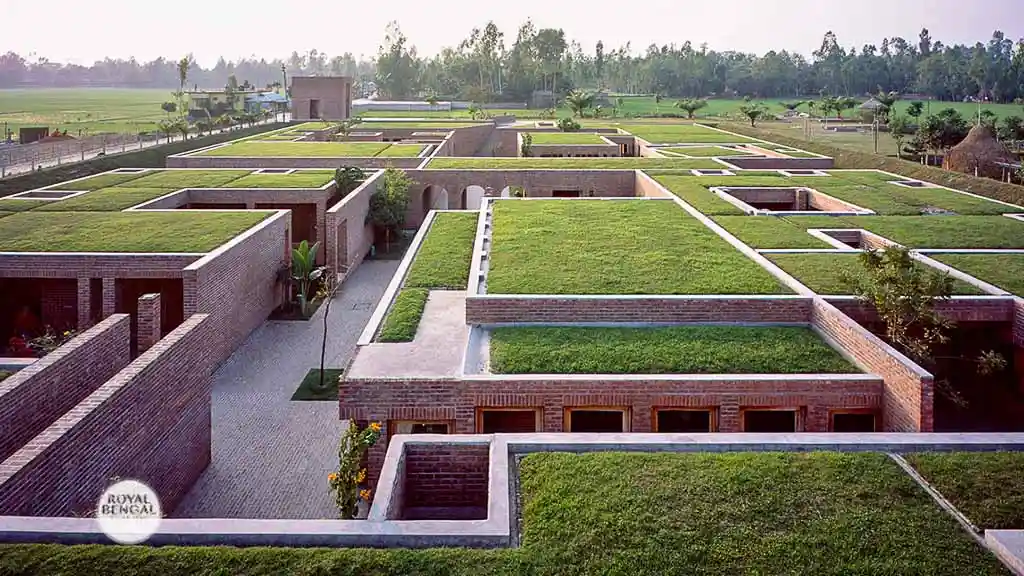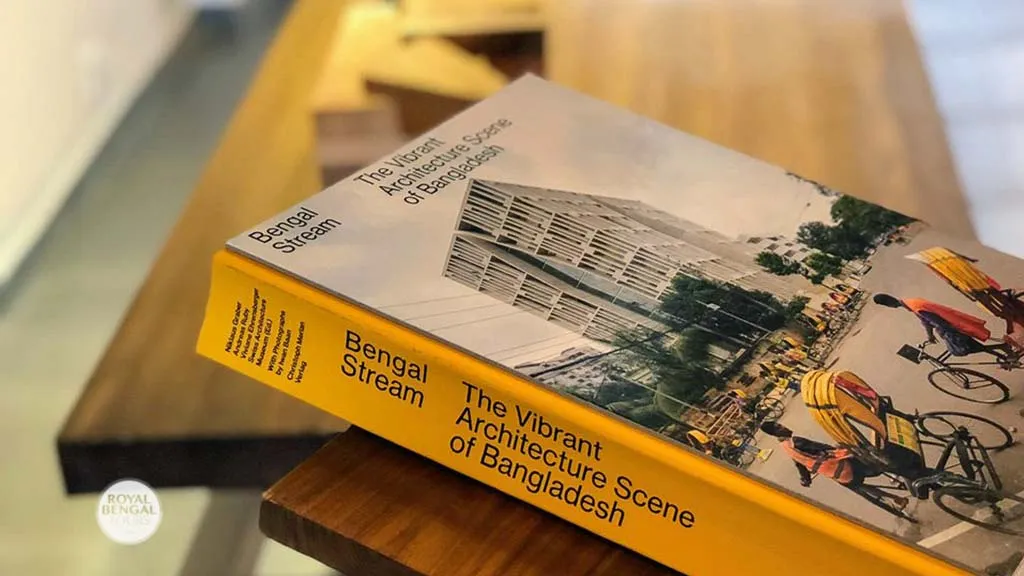The National Parliament Building of Dhaka was designed by the legendary American architect Louis Kahn. The structure is a monumental masterpiece of geometry, light, and shadow. The immense concrete building has a combination of a series of geometric shapes that create a variety of spaces for different purposes. The building is connected to the neighboring landscape by a moat and a garden that encircles it. Natural light filters through the skylights and perforated walls to illuminate the interior spaces. The interior spaces are illuminated by natural light that filters in through the skylights and perforated walls. The building is not only a national identity and a symbol of democracy but also evidence of the genius and creativity of architect Louis Kahn.
Dhaka’s Bait Ur Rouf Mosque, designed by local architect Marina Tabassum, is another extraordinary structure. The mosque is a cube that stands on a plinth above a body of water. Ventilation and natural light can penetrate the prayer hall through the cube’s circular openings. On the walls and floor, the openings produce a spectacular effect of light and shadow. The mosque is constructed from native materials, including masonry, terracotta, bamboo, and wood. The mosque is a spiritual and tranquil space that embodies the substance of Islamic architecture.
In the southeastern corner of Bangladesh, Bagerhat is a UNESCO World Heritage Site and home to a number of Islamic and Hindu monuments from the 15th and 16th centuries. Sixty Dome Mosque is the most remarkable archaeological site and an exceptional example of the Sultanate period’s Islamic architecture.

